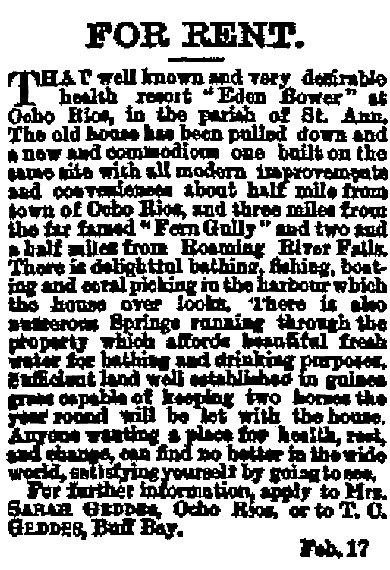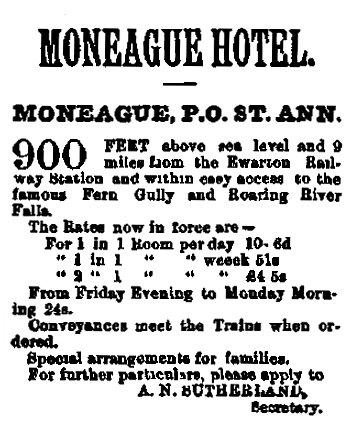
 which may also refer to what became known as Fern Gully, though there are enough references in various descriptive and travel pieces at the period to the 'Fern Walk' in the mountains near Newcastle to suggest that that is the location actually indicated. The location of Heade's painting would still seem uncertain; possibly the artist had created a location out of various sketches made while in the island.
which may also refer to what became known as Fern Gully, though there are enough references in various descriptive and travel pieces at the period to the 'Fern Walk' in the mountains near Newcastle to suggest that that is the location actually indicated. The location of Heade's painting would still seem uncertain; possibly the artist had created a location out of various sketches made while in the island.
'It would be practically impossible to describe in detail the inexhaustible beautiesof the island. A vivid word-painting of that fern-clad gorge through which for somemiles the road winds down to the exquisitely situated village of Ocho Rios, nestled around the sandy shores of a small bay, whose waters, dancing in the sunshine, arecoloured as only waters are within these tropic seas, would read like a glimpse of
Paradise; and there is hardly a spot in the island where the eye will not rest uponsome view that fills it with a sense of the fullness of beauty.'
for Canada, making a visit to St. Ann, using the term 'fern gully' without the capital letters:
Daily Gleaner, March 30, 1891
Mr. Brown desired to see more of our beautiful Island, and see as many prominentmen as possible, he speaks in the highest terms of his trip and the kindness andhospitality of all he met. Travelling from Moneague to Ocho Rios by the fern gully
- on to St. Ann's Bay, passing the night at Mrs. Watson's Lodging House, and onto Brown's Town where Mr. Brown and friends were the guests of Mrs. Johnston.
'Distant but two hours drive from St. Ann's Bay, 1½ hours drive over Mount Diabloto the railway. Excursion parties will be within 14 miles of the Roaring River falls,12 miles from the Cascade in St. Mary and in easy reach of the Fern Gully leading to Ocho Rios.'
Daily Gleaner, April 20, 1892
AN EASTER HOLIDAY TRIP.
'On
Saturday we entered our buggy hired from the enterprising Mr, Sutherland and drove through the celebrated Fern Gully on our way
to visit the Roaring River Falls.
The morning
was a beautiful one; with clear blue
sky above,
and delicious from the cool,
sweet atmosphere
to which the early sun was just beginning to
impart its warmth.The air was redolent with the
fragrance of the Lime and Orange trees. On
either side of the road gentle zephyrs
down the
glen wave the proud fronds of
the ferns while
their foliage glistened with dew drops. We
would fain have lingered
to survey the
lovely
scenes that appeared to the eye
but time pressed
on and so did we.'

Daily Gleaner, December 23, 1899
The
winner of the prize for the best letter
on how to spend a fortnight's holiday in
Jamaica is Rev. J. W. Graham, Guy's Hill.
HOW BEST TO SPEND A FORTNIGHT'S
HOLIDAY IN JAMAICA.
BY REV. J. W. GRAHAM.
'On
the sixth day the far-famed Fern Gully will provide lots of attractions for the holiday-maker, and with the addition of the
scenes of
interest en route, a very pleasant day will be
spent.'






